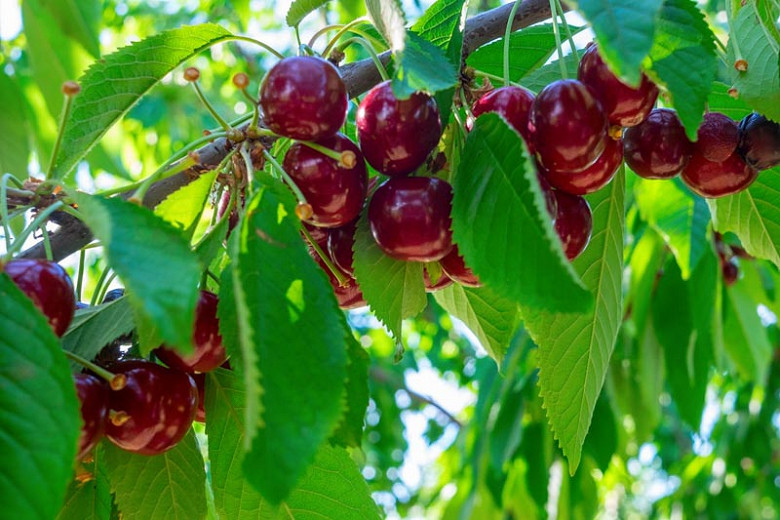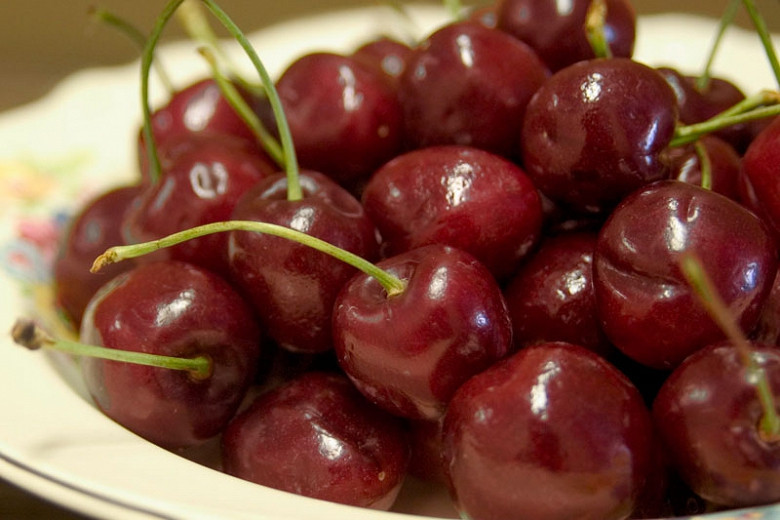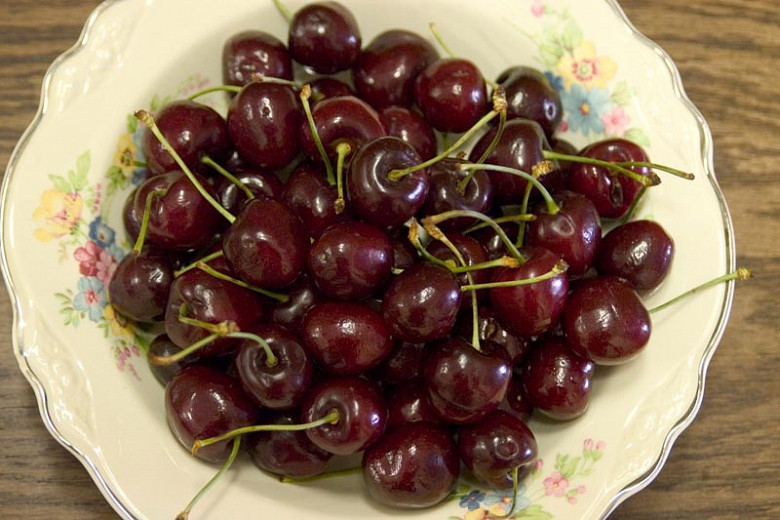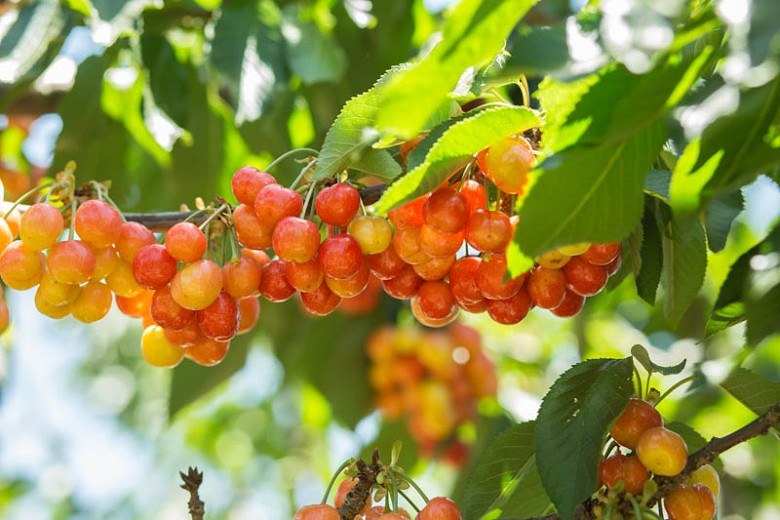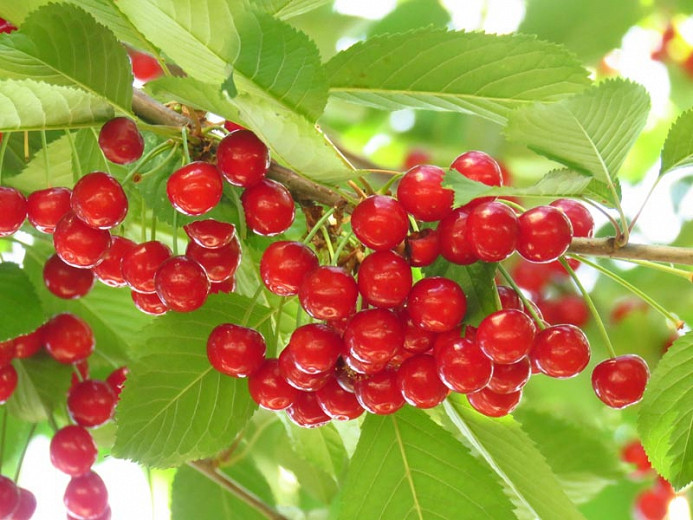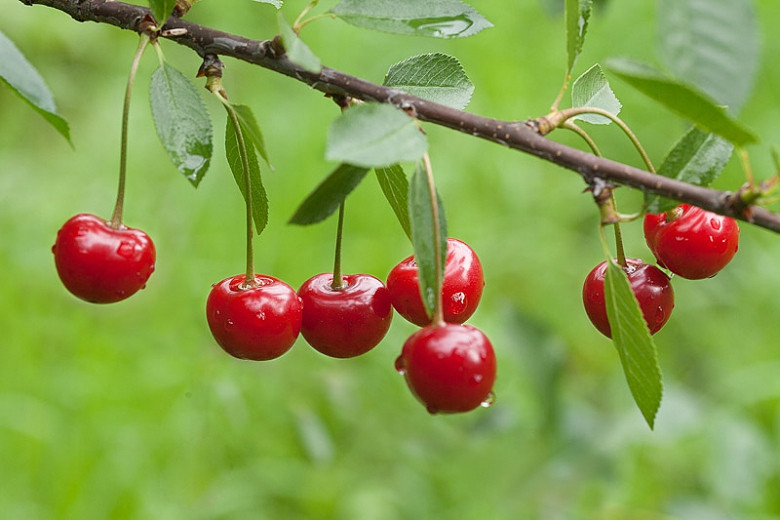Prunus avium Stella (Sweet Cherry)
Self-fertile, award-winning Prunus avium ‘Stella’ is a medium-sized cherry tree of pyramidal habit boasting an abundance of sweetly scented white flowers clustered along the branches in mid-spring. They are followed by a bountiful crop of large, heart-shaped, dark red cherries in early-mid summer.
Self-fertile, award-winning Prunus avium 'Stella' is a medium-sized cherry tree of pyramidal habit boasting an abundance of sweetly scented white flowers clustered along the branches in mid-spring. They are followed by a bountiful crop of large, heart-shaped, dark red cherries in early-mid summer. The cherries have a sweet, rich flavor with a good texture but tend to crack in wet weather. They are excellent for eating fresh, canning, or preserves. Its spreading canopy is adorned all summer long with smooth, lustrous, dark green leaves. Stella does not require a pollinator but is a good pollinator for almost any other variety. A very popular cherry cultivar in both commercial and home orchards.
- Recipient of the prestigious Award of Garden Merit of the Royal Horticultural Society.
- Grows up to 15-20 ft. tall and wide (450-600 cm) at maturity.
- Performs best in full sun in moist, relatively fertile, well-drained soils. Sweet cherries are best suited to fan-training, so they can be netted against bird damage and protected from frosts.
- This cherry tree has a chill hours requirement of 600 (hours of temperatures below 45ºF (7ºC) in the winter for their buds to open in the spring)
- Train fan-trained trees in spring. Prune established fans and carry out routine pruning on established cherry trees when harvesting the fruits in summer. Dead, weak, or unnecessary branches can be pruned annually in late winter or early spring. Otherwise, little or no pruning is needed.
- Protect from birds that damage buds and eat the fruit. May suffer from aphids, caterpillars, leaf-mining moths, winter moth caterpillars, silver leaf, bacterial canker, and blossom wilt.
- Propagate by chip budding or grafting on clonal rootstock for fruit.
- Toxic to dogs, toxic to cats, toxic to horses.
- Prunus avium species is native to Asia and Europe.
- Find where this species is invasive in the United States.
- Discover beautiful U.S. native plant alternatives.
Requirements
| Hardiness | 5 – 8 |
|---|---|
| Heat Zones | 1 – 8 |
| Climate Zones | 2, 2A, 2B, 6, 7, 8, 9, 14, 15 |
| Plant Type | Fruit, Trees |
| Plant Family | Prunus – Fruit Trees, Cherries |
| Exposure | Full Sun |
| Season of Interest | Spring (Mid)Summer (Early,Mid) |
| Height | 15' – 20' (4.5m – 6m) |
| Spread | 15' – 20' (4.5m – 6m) |
| Water Needs | Average |
| Maintenance | Low |
| Soil Type | Chalk, Clay, Loam, Sand |
| Soil pH | Acid, Alkaline, Neutral |
| Soil Drainage | Moist but Well-Drained, Well-Drained |
| Characteristics | Fragrant, Plant of Merit, Showy |
| Attracts | Birds, Butterflies |
| Garden Uses | Beds and Borders, Wall-Side Borders |
| Garden Styles | Informal and Cottage, Prairie and Meadow, Traditional Garden |
